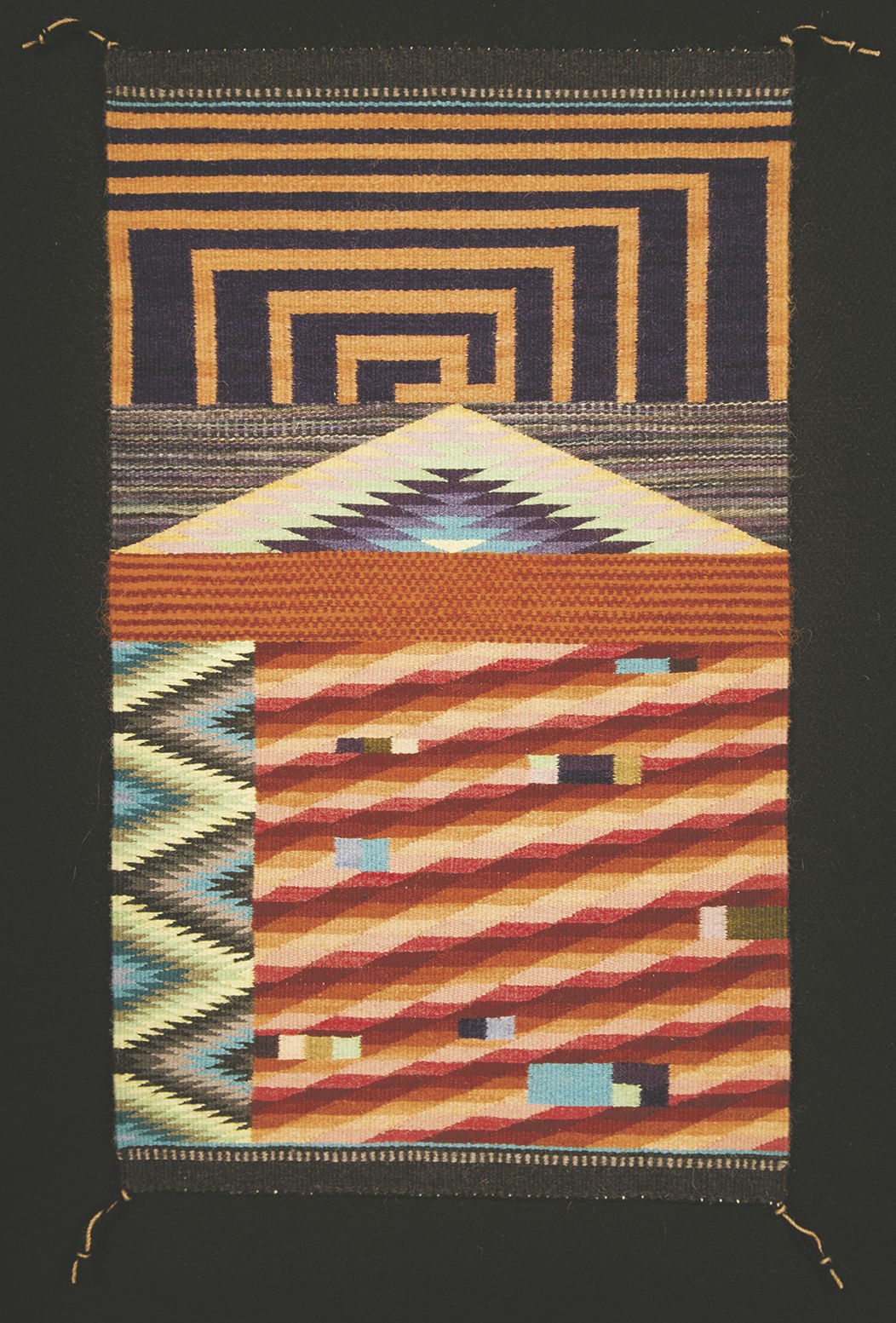Sand Painting by Fred Stevens Jr.
Fred Stevens Jr. is generally credited with the "permatization" of Navajo sand paintings; an act that radically changed the sacred ceremony into an art object. With glue and sand holding the reproductions together, they could be easily consumed as curios by tourists eager to possess a facsimile of a potent and ancient medicine.
I'm interested in the reclamation of the aesthetics of these art pieces, from the representation of the Holy People to the unique aesthetic features that make so-called sand paintings so attractive. I want to examine the visual tradition with respect to both its sacred origin and evolution into gift-store consumable and propose a new idea of what these images can mean to the community from which they originated.
I am a Diné student studying at Lawrence University in Appleton, Wisconsin, located on the ancestral lands of the Menominee Nation. My artistic pursuits involve pen-and-ink, watercolor, charcoal, and the study of line and color. I've always processed my cultural identity through an artist's lens, making sense of it visually. Sand paintings have always fascinated me, especially in the dash-faces of the yeibicheii (Holy People) and their beautiful arching bodies. I want to make reference to their sacredness, kitsch, and cultural evolution in my art and create a pop art tradition.
Native American art is frequently relegated to art made for viewing by Westerners. I want to make art about this phenomenon, transforming it into something made for the Native eye rather than tourists.
I want to draw inspiration from both traditional Navajo art and contemporary Navajo art.
This is a Warhol-inspired painting from Ryan Singer called Mutton Stew.
I also love Melissa Cody's contemporary Navajo rugs:



No comments:
Post a Comment